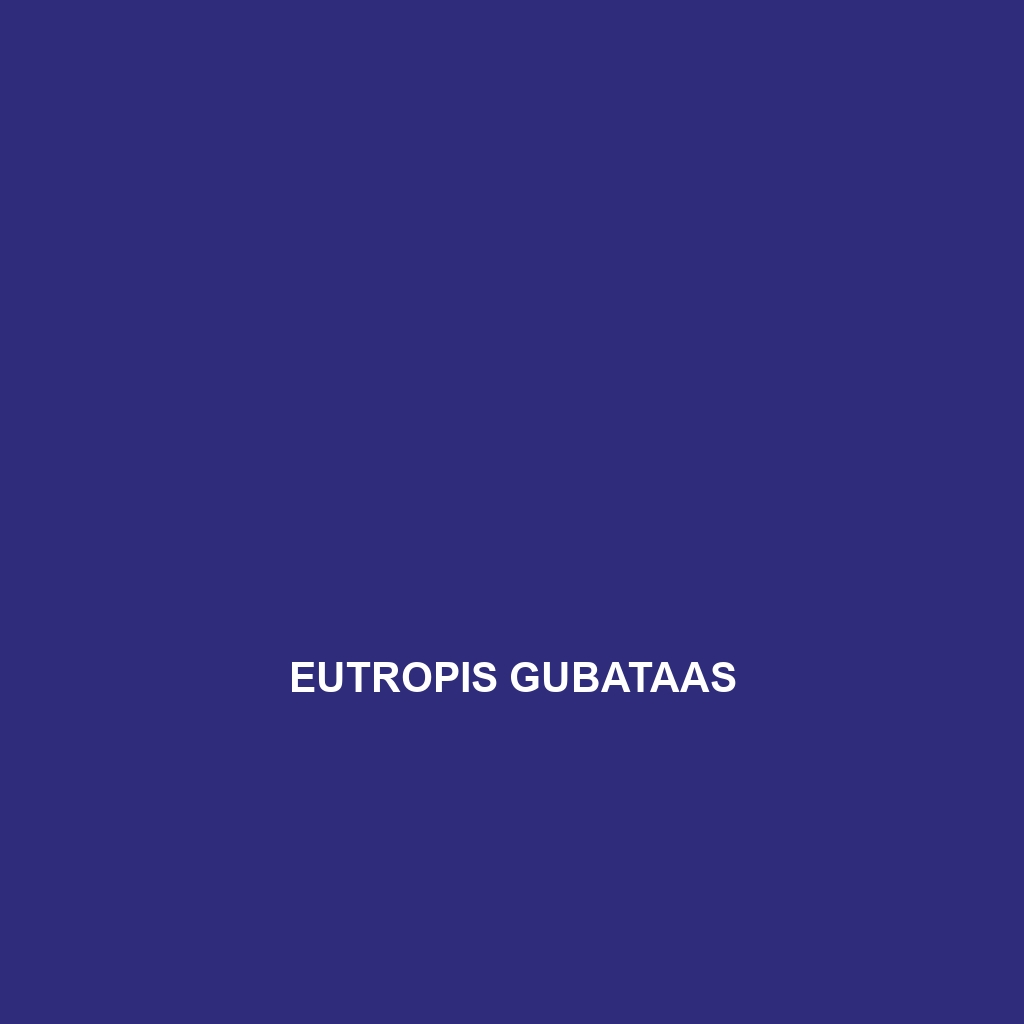Common Name
Eutropis gubataas
Scientific Name
Eutropis gubataas
Habitat
Eutropis gubataas, commonly known as the Guba Skink, is primarily found in the lush and diverse ecosystems of South and Southeast Asia. These reptiles thrive in a variety of environments, such as tropical rainforests, open savannas, and temperate forests. They prefer areas with abundant leaf litter, underbrush, and decaying vegetation, which provide both camouflage and food sources. The climate in these regions varies from humid and tropical to more temperate conditions, impacting the distribution of the species. Often located near water sources, Eutropis gubataas can also be found in drier areas, demonstrating adaptability to varying environmental conditions.
Physical Characteristics
Eutropis gubataas displays a distinctive physical appearance that aids in its survival. Adults typically reach a length of 20 to 25 centimeters. Their bodies are elongated and slender, contributing to their agile movements through dense vegetation. The coloration of Guba Skinks is quite striking; they usually feature a combination of vibrant greens and browns that help them blend seamlessly into their habitat. Their scales are smooth and glossy, further enhancing their camouflage against leaf litter. Noteworthy features include their short legs and sharp claws, which are designed for digging and climbing.
Behavior
In terms of behavior, Eutropis gubataas exhibits diurnal activity patterns, making it a daytime forager. These skinks are known for their elusive nature, often hiding under rocks or within dense vegetation when threatened. Socially, they are generally solitary but can be observed basking in small groups during optimal temperatures. Their communication often involves subtle body movements and color changes. During the mating season, males engage in competitive displays, showcasing their physical fitness through exaggerated movements and vibrant colors. Observations also suggest that Guba Skinks exhibit territorial behavior, marking their habitats with scent for claiming space.
Diet
As omnivores, Eutropis gubataas has a varied diet that consists of insects, snails, and small plant matter. Their foraging habits are opportunistic; they primarily hunt during the day to capture a variety of prey, including termites, ants, and caterpillars, making them significant insectivores in their ecological niche. The skinks utilize their sharp teeth for grabbing and consuming prey, while their diet is supplemented by plant matter, contributing to their energy needs and overall health.
Reproduction
The reproductive cycle of Eutropis gubataas typically occurs during the warm season, when environmental conditions are most favorable. Mating usually takes place in the early mornings, after which females lay between 5 to 15 eggs in underground nests or beneath leaf litter. The gestation period lasts roughly two months, leading to the hatching of juvenile skinks that are precocial, meaning they are relatively mature and independent at birth. Parental care is minimal; however, the juvenile skinks exhibit behaviors that enhance their survival, such as seeking refuge in vegetation until they grow stronger.
Conservation Status
Currently, the conservation status of Eutropis gubataas is classified as of ‘Least Concern’ according to the International Union for Conservation of Nature (IUCN). While the species is relatively widespread, habitat loss due to agricultural expansion, urbanization, and deforestation poses significant threats. Conservation efforts are being initiated in several regions to preserve natural habitats and promote ecosystem health, which is essential for sustaining populations of Eutropis gubataas and other cohabiting wildlife.
Interesting Facts
One fascinating attribute of Eutropis gubataas is its ability to regenerate its tail after losing it due to predation or accident, a survival adaptation that allows this skink to escape from threats effectively. Additionally, these skinks have been observed performing unique body postures when displaying aggression towards rivals or during courtship rituals. This species also has a surprisingly keen sense of smell, surpassing many other reptiles, which aids in its foraging and social interactions.
Role in Ecosystem
Eutropis gubataas plays a crucial role in its ecosystem, acting as both predator and prey. By consuming a significant number of insects, they help control pest populations, thus maintaining a healthy balance in their habitats. Additionally, their presence in the food web serves as a food source for various predators, including birds and larger reptiles. As both a forager and overseer of their surroundings, Guba Skinks contribute to seed dispersal and soil aeration through their burrowing activities, playing an essential part in promoting ecological health and biodiversity.
